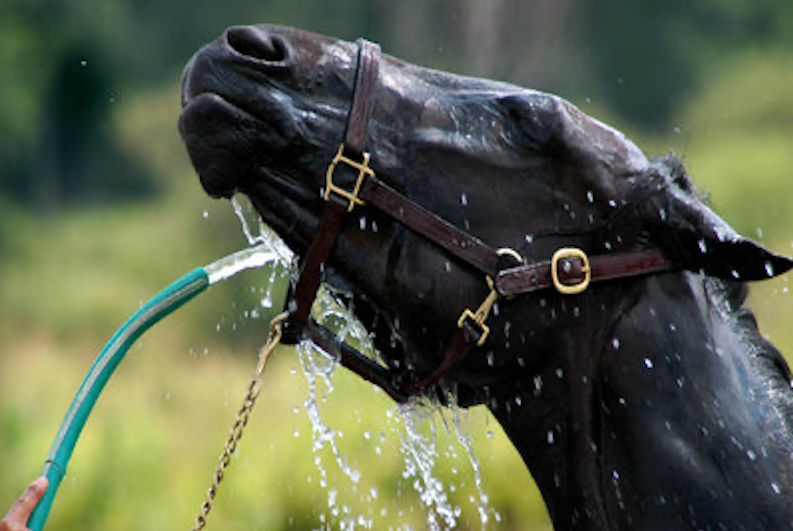Feeding For Recovery

With the Grand National over the weekend, a focus on recovery for this month’s blog seemed apt!
Feeding for optimum performance naturally encompasses recovery, in fact, a good feeding regime leading up to events proactively sets a horse up for a speedy and full recovery.
Key factors to consider in recovery are water, electrolyte replenishment and restoring muscle and liver energy stores (glycogen). While these elements will be naturally restored with rest and a standard diet over time, where the performance horse is concerned faster recovery is essential.
Maintaining hydration: The Facts
- A loss of just 2% of water in the horse’s body can have negative effects on performance.
- Water is lost through various mechanisms, one of which is through sweat. Sweat is made up of water, a protein called latherin (which helps to spread the sweat) and electrolyte minerals. On a typical UK summer day, a 500kg horse can lose 5-7 litres of sweat per hour of steady trotting and cantering. This can rise to 10-12 litres per hour under conditions of high heat and humidity. Along with water, it is estimated that ~10g of electrolytes are lost per litre of sweat.
- Electrolyte balance is vital to trigger thirst response, making not only water but electrolyte provision key considerations for any hydration strategy.
- Fibre in the gut acts as a reservoir for water and electrolytes, making ample fibre provision an essential consideration. For those that may not eat much forage when travelling, this can be a key piece of the puzzle to address to promote hydration, performance, and recovery.
- Dehydration is strongly associated with higher risk of colic, gastric ulcers and urinary tract issues, making it not only a concern for performance but overall health.
Electrolytes: what, when and how?
- Electrolytes are body salts essential for fluid balance, muscle, and nerve activity. The key electrolytes to note are sodium, potassium, and chloride. There are many electrolytes on the market suited for daily use such as ‘Everyday Electrolytes’, the difference between these and ‘Restore-Lyte’ is that the latter combines electrolyte and muscle glycogen (energy store) replenishment. As such, Restore-Lyte can be used in place of Everyday Electrolytes where an additional boost to the recovery process is required.
- Electrolytes can be offered daily for those in moderate to hard work (or exercising in hot/humid environments) or those in less daily work when competing. On the day of an event, electrolytes can be provided before, during and after exercise (requirement dependant on the discipline). For example, if eventing, further electrolytes could be offered between phases.
- Electrolytes can be fed in a feed (a wet or sloppy feed is ideal) or diluted in water. Regardless of feeding method, electrolytes should always be offered alongside plain water.
Additional Support
A range of options are available to provide additional support for muscle recovery (Premier E, Optima BCAA, Ly Pic +) and energy store replenishment (DMG600, Ly Pic +, Equine Energiser, Restore-Lyte). The best fit supplement is often specific to the discipline, current ration and individual horse.
Muscle recovery: As workload increases, so does production of free radicals (unstable molecules that can damage cells). Additional antioxidants (such as vitamin E or selenium) can essentially ‘mop up’ free radicals, reduce the risk of damage and promote muscle recovery. Additional supplementation of antioxidants (e.g. Premier E) would be particularly recommended where a horse has limited access to fresh forage (grass). Alternatively, Ly-Pic combines the job of antioxidant, energy, and recovery booster for those requiring a more holistic approach.
Energy store replenishment: For those with heavy training and competition schedules, or for those re-fuelling on the go (such as vet gates, between classes or phases) a combination electrolyte and energy product can be used such as Restore-Lyte, or for slower-release energy (well-suited for endurance and other disciplines requiring stamina) Equine Energiser can be used.

